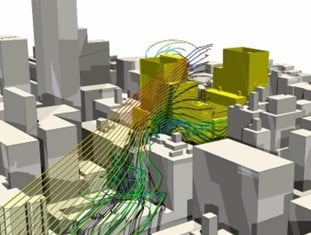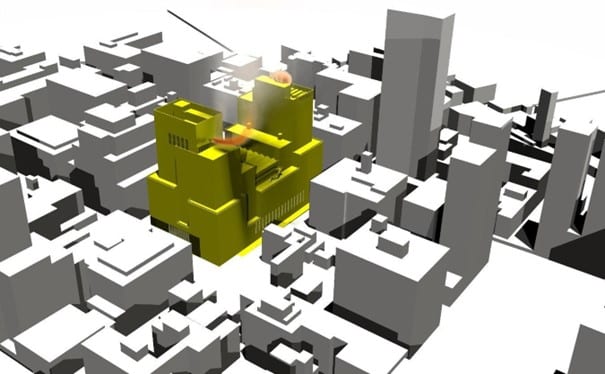CFD Wind Analysis New York, USA
Project Galaxy, New York – CFD Outdoor Pollutant Dispersion
Windtech Consultants were engaged as a key wind consultant for Project Galaxy, a Manhattan development designed by Skidmore, Owings and Merrill. The project used computational fluid dynamics (CFD) to assess outdoor pollution dispersion from various flues and stacks. This case study highlights the engineering methods implemented, the challenges faced during the process, and the tailored solutions provided by Windtech Consultants.
Wind Engineering Methods Implemented
Windtech Consultants used advanced CFD wind analysis techniques to do a full assessment of HVAC exhausts from boiler flues, air-side heat pumps, and façade louvres, as well as natural and mechanical ventilation sources. The CFD study accounted for wind flow and ambient environmental conditions, such as temperature, humidity, and solar irradiance, on a peak day. This allowed for analysing ISO surface volumes of pollution concentration due to specific site winds and environmental conditions.

Fig. 1 – Visualization of velocity field approaching the subject development

Fig. 2 – Model of exhaust dispersion at subject development
Challenges Faced During the Process
The primary challenge faced for this New York project was accurately predicting the dispersion of pollutants from multiple sources and ensuring that the pollution concentrations did not exceed the National Ambient Air Quality Standards (NAAQS) or relevant federal standards. This required a thorough understanding of the complex wind flow patterns and environmental conditions unique to the Manhattan area.
Solution
Using the results from the CFD wind analysis, Windtech Consultants formulated precise mitigation recommendations to address the dispersion of pollutants. These included, but are not limited to:
1. Advanced ventilation and filtration systems were integrated into the HVAC design to improve air quality within Project Galaxy. These systems effectively capture or neutralise pollutants.
2. The positioning and design of flues and stacks were also carefully optimised to minimise the potential for pollutant accumulation and maximise dispersion.
3. The placement of facade louvres and ventilation openings was strategically planned to facilitate natural ventilation while minimising the ingress of pollutants.
Need help with an upcoming project? Don’t hesitate to contact our dedicated Global Wind Engineering team, who will gladly assist. With offices in Sydney & Melbourne, Australia, London, UK, and Mumbai, India. New York & Miami, USA, Dubai, Hong Kong & Singapore, we guarantee to support you wherever you are based.


